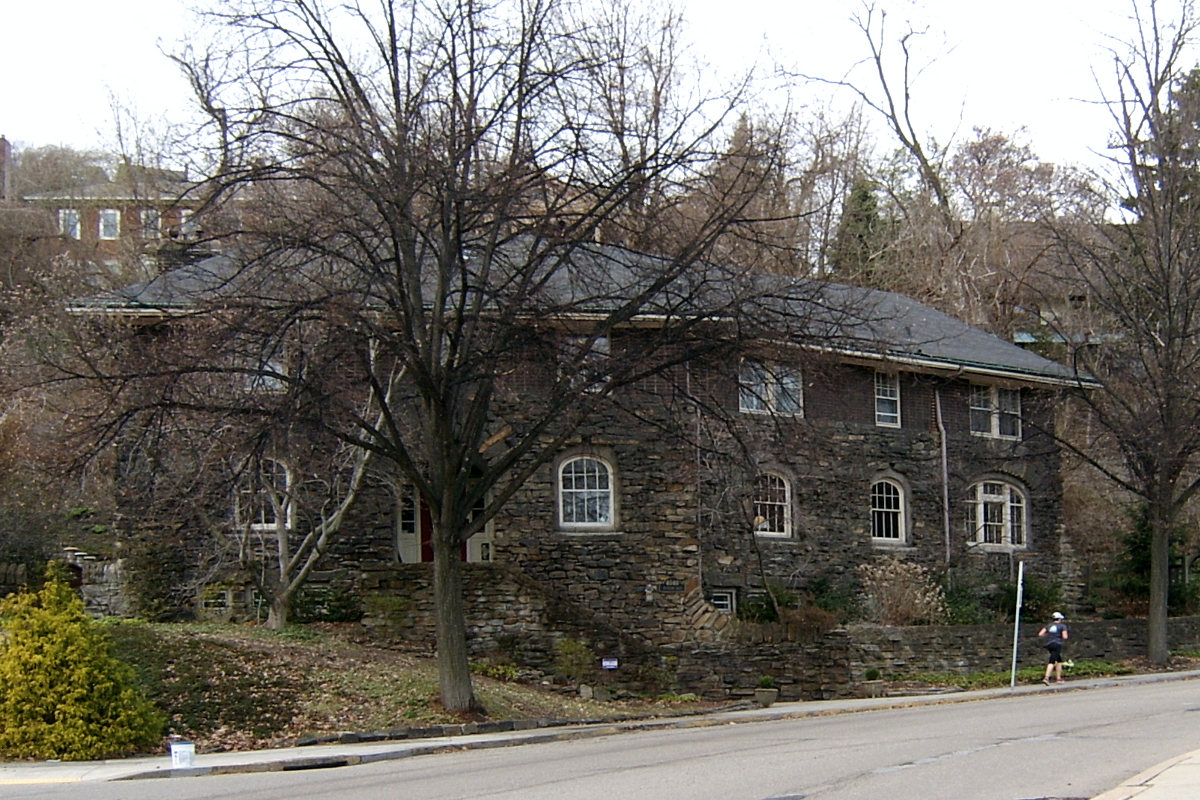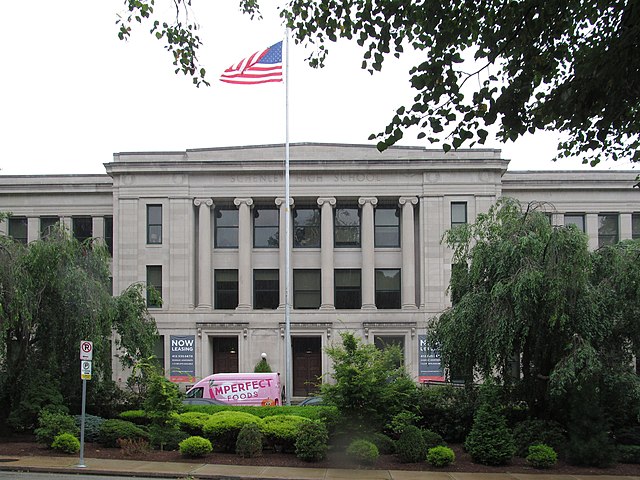
The base of a tree against a sidewalk in Schenley Farms.

This house in Schenley Farms has had a thorough cleaning and looks just built. It has also lost a large and perhaps obstructive tree. Compare the picture above to the one below, which Father Pitt took in 2014:

Addendum: This house, known as “Ledge House,” was designed by Henry Hornbostel. It was the home of Arthur Hamerschlag, for whom Hamerschlag Hall was named.

This is the most magnificent work of an architect who specialized in magnificent schools: Edward Stotz, whose son was the noted preservationist Charles Stotz. The building occupies a triangular sloping plot, which certainly challenged the architect. Mr. Stotz responded with a triangular building that looks inevitable on its site.

When it opened in 1916, Schenley High was a shrine of culture and art, an idealized version of what high-school education could be in an enlightened city. It closed as a school in 2008, and it has now, like every other substantial building in a desirable neighborhood, been refurbished as luxury apartments.


Curiously, Edward Stotz was also responsible for another famously triangular building: the Monongahela Bank Building, which is now the Wood Street subway station and the Wood Street Galleries.

It started to rain while Father Pitt was out for a walk today, which gave us this atmospheric picture of the Cathedral of Learning looming through the mist like a heavenly palace behind the pleasant houses of Schenley Farms. This is why old Pa Pitt’s cameras live in a waterproof bag. Father Pitt himself is not waterproof, but he does dry fairly quickly.
If you like black and white and all the greys in between, you might enjoy Father Pitt’s Monochrome World, a very simple site that collects his favorite black-and-white pictures from Pittsburgh and elsewhere.
Stuck in a corner of the university district in Oakland, Schenley Farms is a delightful surprise. The institutional buildings of the University of Pittsburgh come to a sudden halt, and all at once there are tree-lined streets with century-old houses in a broad but harmonious variety of styles—everything from Italian Renaissance palaces to Tudor mansions to rustic stone cottages.
The streets are named after what the projectors of the neighborhood considered the greatest writers of the modern age. We can still see two of their names in brass in the sidewalk at the intersection of Parkman and Lytton—that’s Francis Parkman, the great American historian, and Lord Lytton, or Edward Bulwer-Lytton, the inspiration for the annual Bulwer-Lytton Fiction Contest.